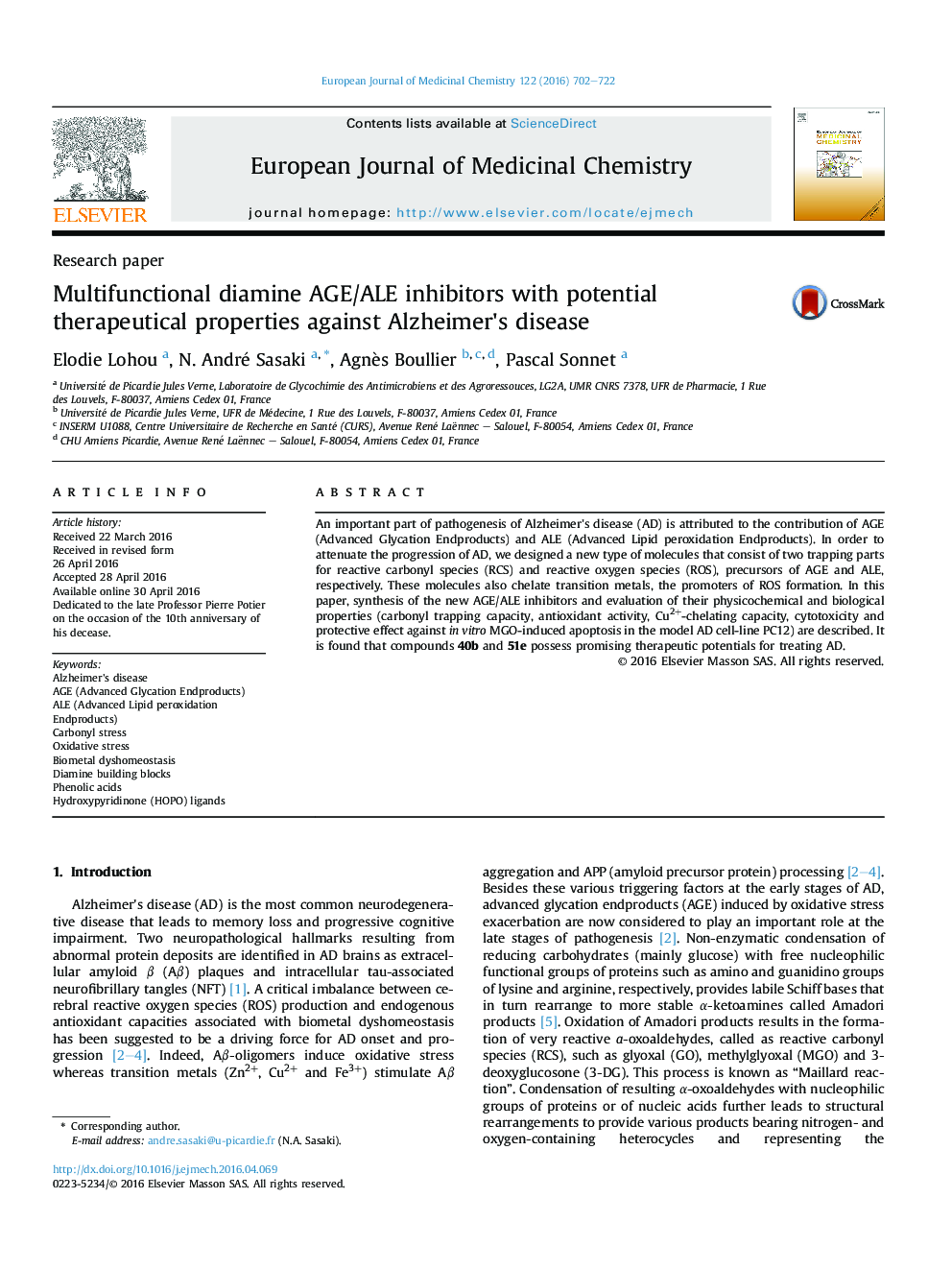| Article ID | Journal | Published Year | Pages | File Type |
|---|---|---|---|---|
| 1394954 | European Journal of Medicinal Chemistry | 2016 | 21 Pages |
•Multifunctional diamine AGE/ALE inhibitors were prepared from various amino acids.•Vicinal diamine building blocks were conjugated with phenolic acids or HOPO ligands.•Their capacities for trapping Reactive Carbonyl Species, ROS or Cu2+ were assessed.•Their cytotoxicity and protective effect against apoptosis were evaluated.•The lead compound 51e possesses promising therapeutic potentials for treating AD.
An important part of pathogenesis of Alzheimer's disease (AD) is attributed to the contribution of AGE (Advanced Glycation Endproducts) and ALE (Advanced Lipid peroxidation Endproducts). In order to attenuate the progression of AD, we designed a new type of molecules that consist of two trapping parts for reactive carbonyl species (RCS) and reactive oxygen species (ROS), precursors of AGE and ALE, respectively. These molecules also chelate transition metals, the promoters of ROS formation. In this paper, synthesis of the new AGE/ALE inhibitors and evaluation of their physicochemical and biological properties (carbonyl trapping capacity, antioxidant activity, Cu2+-chelating capacity, cytotoxicity and protective effect against in vitro MGO-induced apoptosis in the model AD cell-line PC12) are described. It is found that compounds 40b and 51e possess promising therapeutic potentials for treating AD.
Graphical abstractFigure optionsDownload full-size imageDownload as PowerPoint slide
